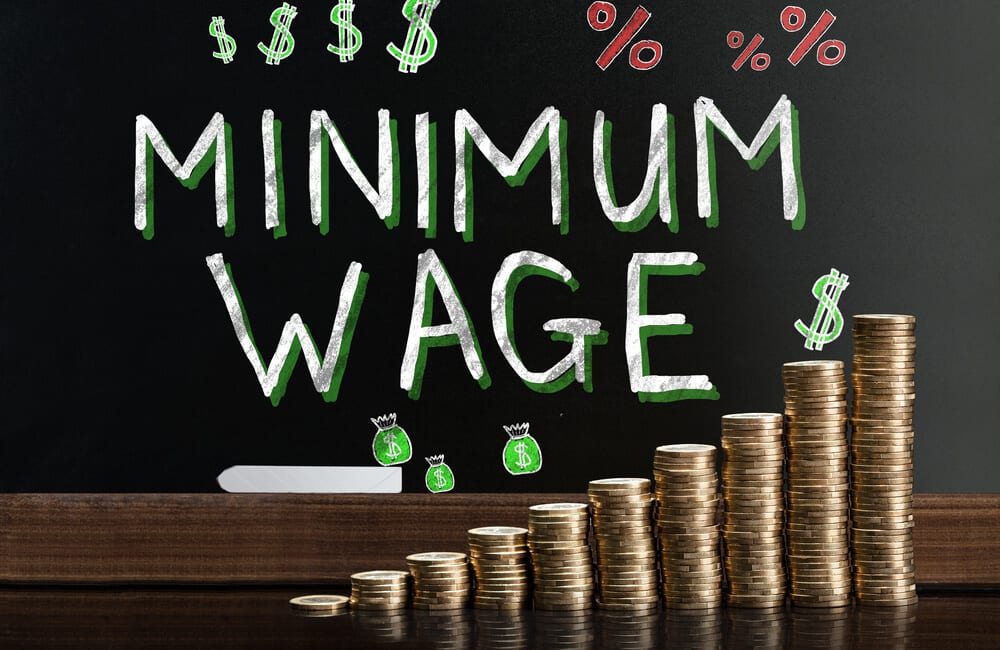The rising pattern follows the blue trend lines until we hit a much higher ratio value around 4 (ie Luxembourg levels) when a new trend emerges that starts seeing tax wedge dropping again (purple trend lines) – does this mean that if the jurisdiction is rich enough and sticks to a low minimum wage relative, it can avoid needing to raise more taxes to finance this welfare? Or are Russia, HK, Singapore unique exceptions to the rule in the high ratio zone just as Taiwan, Indonesia are in the low ratio zone?
Visible hand always causes unintended distortions
Despite having over a decade of experience with minimum wage administration, the disadvantages of putting such an important economic lever in the hands of bureaucrats is obvious:
1) Political pressure rises during volatile asset upcycles – when home prices rise in a bubble (blue line in Chart 6, between 2012 and 2020) however fast minimum wages (red line) are adjusted up by the govt, there will be cries of stinginess, as pay simply cannot catch up with the exponential rise in home prices (thus the wage increases will still be woefully home buying needs);
2) Private market cries foul in downcycles – although the minimum wage never catches up with private sector pays in the upcycle, note how rapidly private sector pay adjusts to economic downturns (green line in 2019-21, and no doubt 2024+) whilst the govt mandated minimum wage has only gone in one direction: forever rises, causing societal divide and cries of unfairness especially during times of economic hardship. The current proposal of not allowing the minimum wage to fall is not only redundant given past practice, but is also idiotic as it belies basic economic theories!
3) The govt’s new proposal to benchmark minimum wage to overall GDP growth obviously incorrectly imposes the city-wide total output over what should be a per capita measure in the minimum wage situation. What this means is, if HK’s population grows fast, but overall wage rates stay stagnant, minimum wage will still be lifted irrespective of overall wage levels;
4) Minimum wage never underperformed CPI (purple line) except briefly in 2014 – this may be why the govt has to ditch CPI as a measure, even though the disinflationary cycle is over thanks to geopolitics and deglobalization, meaning in future stagflation will result in inflation going above wage increases. How behind the curve the people residing in ivory towers could be proven again in the next few years just when the new proposals go into effect?

